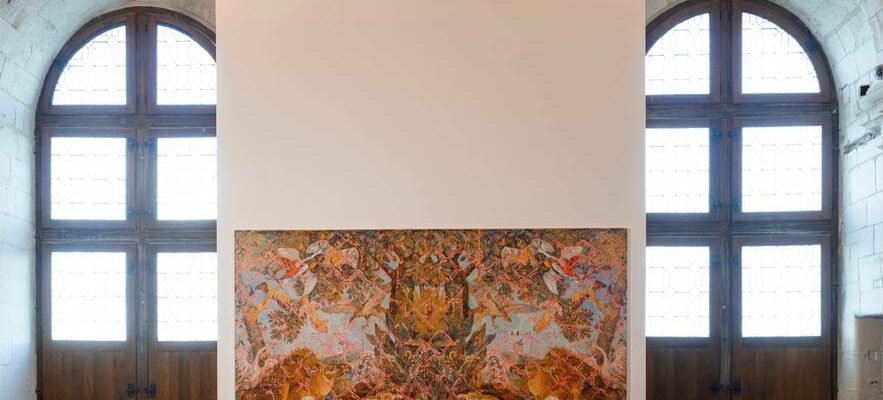What does a royal building built to the glory of Francis I have in common with a former morgue transformed into an artists’ residence? More than 600 kilometers separate the largest castle in the Loire remaining in its original state and the Cannes lair resolutely turned towards the future, but a double exhibition connects them today since the two places simultaneously host the works of Julien des Monstiers* . At just 40 years old, this painter from Limoges is considered a rising figure in contemporary art.
Represented by the Christophe Gaillard gallery, in Paris, which has already devoted five monographic exhibitions to him, he puts painting at the heart of his work, particularly in his animal compositions sometimes borrowed from masters of the past, like Jean-Baptiste Oudry in the 18th century. Suffice to say that the privileged register of Julien des Monstiers takes on a particular magnitude at the Chambord estate, whose walls and works bear witness to a spectacular history: that of the monumental architectural creation desired by François I to make it a luxurious hunting residence annexed to the Château de Blois.
In the rooms adjacent to the famous double revolution staircase, inspired by Leonardo da Vinci, lions and dogs, with open mouths and wide eyes, attack their prey, while the birds flee the carnage to come. Painted with axial symmetry, the scene is reflected in its double, as if confronting itself. Further away, two horses, hooves turned towards the sky, respond to each other in an interminable fall, defying the contemporary landscape which freezes them.
A game with breakups
Julien des Monstiers willingly interweaves eras and plays with ruptures; thus, when, in one of his paintings, he summons two immutable images from our collective imagination, Noah’s ark – here taken from the work of Simon de Myle (1570) – and the unicorn, he reactivates them by placing them on an aerial view of a nuclear power plant. On the tufa walls and under the coffered ceilings, the rendering flirts with the fantastic.
The artist interweaves eras and plays with ruptures.
/ © Leonard de Serres
Animals, floral decorations or tapestries… Whatever the subject put forward by the young artist, his compositions all respond to the same creative process: the motifs are first painted in a classic way, independently of the final work, then he places on the still fresh paint of the large films of glassine used by florists. Once the patterns have been absorbed in their entirety by the films, he applies them to the surface of the white canvas like a decal. The process reveals on each work a sort of faded mesh which evokes subsequent scrapings on the composition even though it constitutes its starting point. A technique and a gesture which are the DNA of this singular corpus and which the Suquet des artistes de Cannes – the ex-morgue transformed in 2015 – presents as a “meditation on pictorial matter”.
In Chambord as on the Côte d’Azur, Julien des Monstiers had carte blanche to include his work in these radically different places. These are the titles of the exhibitions which, by passing the buck, act as a common thread: Inside Outside at Francis I, Above below in the Cannes laboratory.
*At the Suquet des artistes de Cannes (Alpes-Maritimes) until September 22 and at the Chambord estate (Loir-et-Cher) until November 3.
